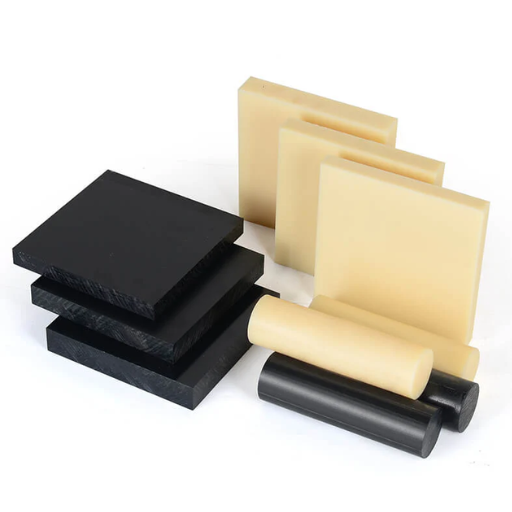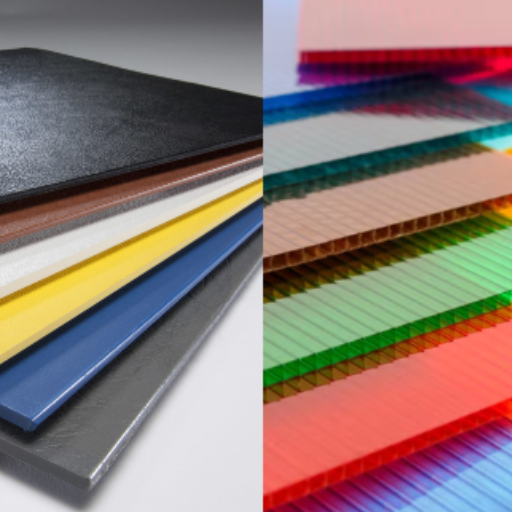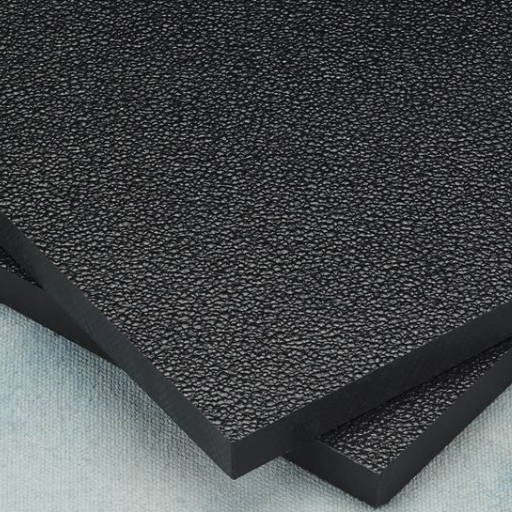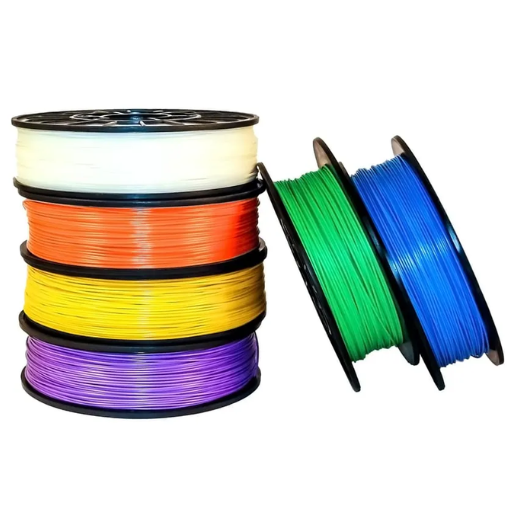When it comes to the discipline of materials science and engineering, having knowledge about different plastic types is very important so as to choose the right material for diverse applications. This article has been prepared with a view of giving a complete comparison between these two very common plastics – ABS (Acrylonitrile Butadiene Styrene) and Polycarbonate. They are both outstanding in their own capacities which have made them popular in various industries ranging from vehicle industry to consumer electronics. This blog will enlighten readers on how strong or weak ABS plastic is compared to polycarbonate and help them make decisions based on the project requirements they have. We shall also tackle their mechanical properties, durability, thermal stability, as well as cost-effectiveness in order to determine which component may be more appropriate for given applications.
What are the Key Properties of ABS Plastic?

Image source: https://www.beeplastic.com/
ABS plastic is famously known for its outstanding impact resistance,strength and firmness. It shows good electrical insulating qualities, enabling it to be utilized in various electronic applications. The best feature about ABS is that it can endure physical impacts and still maintain its durability under pressure because of the combination of styrene and butadiene in it. Moreover, ABS has a relatively low melting point which allows easy injection molding along with 3D printing. Although not as high as those of other plastics, its thermal stability is sufficient for many standard applications. This material also possesses excellent dimensional stability coupled with good surface quality which makes it ideal for intricate and aesthetically pleasing parts especially where they are required to meet tight tolerances (Gabriel). Lastly, ABS represents an economical choice since it often costs less than Polycarbonate despite providing a strong set of properties suitable for a wide range of applications (Advantages and Disadvantages).
What is Acrylonitrile Butadiene Styrene?
Acrylonitrile Butadiene Styrene (ABS) is a thermoplastic polymer made up of three monomers, namely acrylonitrile, butadiene and styrene. It is a blend that results in superior toughness and impact strength making it widely utilized in various engineering applications. Acrylonitrile gives chemical resistance and thermal stability, butadiene gives elasticity and impact strength while styrene makes the material rigid enough to machine. This balance between properties, easy processing and cost effectiveness have made ABS popular for items ranging from automotive parts to Legos.
What Gives ABS Plastic Its Tensile Strength?
ABS plastic derives its tensile strength from its unique combination of acrylonitrile, butadiene, and styrene. The acrylonitrile component increases the rigidity and chemical resistance of the substance whereas the butadiene provides toughness as well as impact resistance. As such, this material can successfully absorb stress without cracking under load unlike other polymers do. Additionally, this means that styrene can be used as a processability additive or surface finish enhancer according to requirements. Molecular structure of ABS which combines these monomers allows it withstand significant tensile loads thus remaining resilient against mechanical stresses in various forms. Consequently, ABS plastic remains strong enough to be considered durable for many different industrial or consumer applications.
Which Mechanical Properties Make It Durable?
ABS plastic is known for its exceptional durability due to several specific key mechanical properties:
- Impact Resistance: ABS has good impact resistance meaning it can take substantial force or shock without breaking or cracking. Such property is associated with presence of butadiene which absorbs energy so as increase material’s toughness.
- Tensile Strength: The combination of acrylonitrile together with butadiene also known as polystyrene/ABS resin leads to high modulus elastomer having excellent solutions towards stretch ability characteristics – adding more than one element responsible for induced anisotropy during crystallization. This is why it can handle different types of mechanical stresses.
- Thermal Stability: The thing is, ABS retains its mechanical properties at a large range of temperatures and thus remains tough as well as flexible in various environments.
- Chemical Resistance: Acrylonitrile presence ensures that ABS remains resistant to particular chemicals, oil burdens or other selected environmental effects thereby improving life expectancy under severe conditions.
These properties taken together make ABS plastic a strong and versatile material found in many industrial and consumer applications.
How Does Polycarbonate Compare to ABS Plastic?

Polycarbonate is another plastic that is popular for its unique characteristics, and it can be compared to the ABS plastic in some respects. Although the ABS has been praised for its toughness and tensile strength, polycarbonate outperforms it in terms of ruggedness along with clearness. Polycarbonate is less breakable than ABS due to its higher impact resistance; therefore, it is not only useful in cases where visibility is a must but also virtually unbreakable making it an excellent choice for high stress applications such as eyewear lenses and bulletproof glazing. Moreover, unlike ABS, polycarbonate retains its strength and rigidity at higher temperatures because of its superior thermal stability. Nevertheless, polycarbonate tends to be costlier as well as more susceptible to scratches. Ultimately, selecting between ABS ad polycarbonate depends on the specific needs of the application since ABS is a cheap alternative which can do many things while polycarbonate offers unbeatable robustness and clarity even under strenuous conditions.
What are the Material Properties of Both Plastics?
ABS Plastic:
- Impact Resistance: Commonly known for great impact resistance, it can also be used in heavy duty applications.
- Tensile Strength: It is highly strong too, and so it can withstand stretching or pulling forces.
- Temperature Resistance: ABS stays intact within a wide range of temperatures although not to the extent that it can be considered as heat resistant as polycarbonate.
- Chemical Resistance: ABS plastics are resistant to various chemicals. These include acid, alkalis and oils among others which makes them versatile in different environments.
Polycarbonate:
- Impact Resistance: Polycarbonates offer exceptional impact resistance, even higher than ABS making it almost unbreakable.
- Transparency: Owing to its high transparency and excellent optical clarity, PC is an ideal material for use in lenses of glasses like eyewear as well as protective windows.
- Thermal Stability: Compared to ABS, polycarbonate retains its strength and rigidity at elevated temperature levels thus suitable for high temperature environments.
- Scratch Resistance: However, despite being tougher than ABS, polycarbonate is more prone to scratching which might limit its usage in some applications.
Which is More Durable: ABS vs Polycarbonate?
When considering how long something will last, polycarbonate actually prevails over ABS. Polycarbonate is nearly unbreakable and can be used in high-stress environments due to its excellent impact resistance and high thermal stability. In contrast with ABS, polycarbonate has better heat resistance at which it maintains its integrity through wider ranges of temperatures. Nonetheless, ABS too is not a pushover since it also possesses good toughness against impact and tensile strength to support tough applications especially where costs must be controlled. Despite its strength however, ABS is not as resistant as polycarbonate against impacts and temperature changes but it has a lower susceptibility to scratching. Hence both materials are durable but polycarbonate is usually stronger for demanding applications.
What Are the Impact Resistance and Durability of Each?
ABS (Acrylonitrile Butadiene Styrene): ABS has an impressive resistance to breakage which makes it a tough material used for many purposes. It is ideal for products that are frequently handled or might be subjected to impact as it does not crack even under severe stress. Furthermore, ABS has high tensile strength and can bear tremendous loads hence combining the benefit of impact resistance with ease of processing. Nevertheless, at higher temperatures, ABS may fail structurally.
Polycarbonate: Polycarbonate presents one of the highest levels of impact resistance and durability. It is virtually shatterproof with much higher impact resistance than ABS. That is why polycarbonate lenses are commonly used in protective eyewear, safety gear, and components exposed to extreme conditions where strength matters most. Moreover, polycarbonate has excellent thermal stability enabling it to retain its structural attributes even when heated above average levels. On the contrary, polycarbonate may be damaged by scratches more easily compared to ABS.
In conclusion either material could be characterized as highly resistant materials against impacts and long-lasting ones but polycarbonates perform better in high-temperature and high-pressure situations generally speaking although ABS provides considerable durability for a variety of applications when cost is important though less robust than PC.
What Are Common Applications of ABS Plastic?

Because of its toughness and resistance to impact, ABS plastic is widely used in various applications. One notable use is the automotive industry where it is employed in the production of dashboards, wheel covers and other components that require strength and can withstand heat. Additionally, it is commonly used in electronics for making protective casings such as computers, cameras and home appliances. In consumer products sphere, ABS is a material of choice when it comes to productions requiring high durability such as toys (notably LEGO) luggage and sports kits. In addition, abs can be applied on pipes systems or health care equipment where ease of reshaping along with hardness are desired since it’s very versatile.
Why is ABS Commonly Used in 3D Printing?
For several reasons, ABS (Acrylonitrile Butadiene Styrene) is a common choice in 3D printing. The first and foremost is its reputation for being strong and sturdy, which makes it appropriate for fabricating functional components and prototypes that will be subjected to physical stresses and impacts. Secondly, ABS exhibits good thermal stability that enables it to maintain the shape of objects even when exposed to different temperatures. Thus, this property is useful in producing materials that expected to withstand heat during application. Another major benefit is ease of post-processing; ABS can be easily filed, milled or even pasted hence enabling the production of smooth end products with uniformity. In addition to this, ABS is quite cheap as well as readily obtainable thus making it accessible to both hobbyists and experts within the 3D printing world.
What Are Typical ABS Plastic Parts?
There is a wide range of products that are made of ABS plastics which are famous for their strength, durability and thermal stability. As concerns the automotive industry, dashboards, wheel covers and other interior parts are made from ABS because they should be able to endure very extreme climates while still serving for long time. In the field of electronics as well, ABS material is commonly used for making casings and housings of electronic devices such as computers, cameras, television screens and other home appliances which need to be protected from damages due to its substantiality. Simultaneously, consumer goods use the material in producing items including luggages or suitcases that will withstand but also toys like lego blocks and various sporting gears under harsh conditions. Additionally, it’s notable that medical equipment employs this material because it can be easily shaped into strong parts that require precision and elasticity.
How is ABS Used in Injection Molding?
One of the commonly used plastic materials in injection moulding is ABS (Acrylonitrile Butadiene Styrene) due to its excellent properties and versatility. In the process of injection molding, the ABS granules are heated up until they melt and then forced into a mold cavity. Thereby cooling and solidifying them take shape of the desired product. This method is preferred for ABS because it has a comparatively low melting point which makes it possible to have quick production cycles. It is ideal for developing lightweight but strong parts thanks to its inherent strength and rigidity. Many industries use ABS for manufacturing complicated, detailed and high-precision components since it has good dimensional stability as well as surface finish quality. Additionally, various finishes such as painting, lacquering or electroplating can be applied on ABS that make it suitable for producing attractive products used in automotive and consumer electronics sectors among others (Lopez par2). The ability of ABS to maintain its physical characteristics while being molded into intricate geometries ensures its continued use in industrial manufacturing as well as commercial enterprises
What Are the Disadvantages of Using ABS Plastic?

ABS plastic, notwithstanding its numerous benefits, has a few disadvantages too. One crucial drawback is its relatively poor weathering resistance especially to UV light which may degrade the material over time, and cause it to deteriorate mechanically. Further still, ABS has limited resistance against particular chemicals and solvents compared to other plastics thus limiting its application in some industrial environments. Moreover, while ABS is tough, there are more impact-resistant plastics out there than it; therefore it may not be suitable for highly durable applications. Also ABS is derived from petroleum which makes it less eco-friendly than bioplastics or other sustainable materials. Lastly during processing of ABS, proper venting and safety measures should be taken as this material emits potentially harmful fumes when heated up.
Is ABS Affected by Heat Resistance?
ABS plastic has a moderate heat resistance characterized by a melting point of around 105°C (221°F). It may take some high temperatures, but it can be transformed easily and lose its form when exposed to long periods or excessive hot conditions. ABS’s heat resistance is lacking in comparison with other engineering plastics such as polycarbonate, which can hinder its application in environments that are continuously subjected to elevated temperatures. Nevertheless, for various regular uses, the temperature resistance of ABS is mostly sufficient. Optimum performance of parts made of ABS under heat must always be given due consideration during their design and processing.
What Are the Chemical Resistance Properties of ABS?
But ABS plastic is not totally secure from all chemical exposures as it presents moderate resistance to variety of chemicals. Generally, it is resistant to aqueous acids, alkalis and many mineral acids making it suitable for various industrial applications in which these are present; however, acetone, toluene, alcohols and the like can react with ABS resulting in its swelling or dissolution. In environments that contain these solvents, their attack on ABS limits its use thereof. Notwithstanding its limitations though, ABS still remains a versatile material widely used if specific chemical exposures are considered during the design or application phases.
How Does Its Durability Compare to Other Plastic Materials?
As compared to other plastics materials ABS exhibits a good balance between toughness, impact strength and ease of processing. Being more resilient than polystyrene and PVC means that it has better impact strength and structural integrity. However, some aspects make ABS generally less durable than polycarbonate and polypropylene. Polycarbonate has greater impact resistance as well as heat resistance which makes it suitable for high stress conditions. Polypropylene may not be as tough or impact resistant as ABS but this thermoplastic offers improved chemical resistance including fatigue performance which thereby enables long-range flexibility when requirements demand so. All in all, the medium level of durability exhibited by ABS makes it appropriate for many everyday applications although often the choice of plastic will depend on particular needs for each case here.
What Factors Should You Consider When Choosing Between ABS vs Polycarbonate?

When choosing between ABS and polycarbonate, there are several factors that must be considered:
- Impact Resistance: ABS is less resistant to impact than polycarbonate, which makes the latter a better choice for heavy duty applications.
- Heat Resistance: Polycarbonate has a higher temperature tolerance necessary for extended exposure to heat compared to ABS.
- Chemical Resistance: Generally, polycarbonate withstands more chemicals since both of them have their weaknesses.
- Durability: Although ABS offers a good combination of toughness and processability, polycarbonate is more durable and stronger.
- Cost: Generally, ABS costs less hence allowing it to be used in projects where extreme strength or heat resistance is not compulsory among others.
- Weight: In situations where weight reduction is a significant consideration, the lighter ABS will be preferred over the heavier polycarbonate.
The ultimate choice between these two materials depends entirely on your application’s need regarding mechanical stress levels, environmental conditions and budgetary constraints.
What Applications Require High Impact Strength?
Applications that require high impact strength often involve scenarios where materials are subjected to significant stress or sudden impacts. Here are some common applications:
- Safety Equipment: In such hazardous environments, helmets, safety goggles and protective shields made from polycarbonates with high-impact strengths help in ensuring the user’s safety.
- Automotive Components: These include bumpers, dashboards or exterior panels in vehicles which need to have high impact strengths for withstanding potential accidents as well as durability concerns.
- Electronics Housings: High impact resistant materials like those found in smartphones, laptops and other portable electronics can protect internal parts from drops and knocks.
- Sporting Goods: These range from bicycle helmets to hockey visors as well as other protective gear used in different sports which are made from materials that have excellent impact resistance for athletes’ protection.
- Construction Materials: For example skylights and protective barriers, construction uses polycarbonate sheets or other tough materials that combine transparency and high impact resistance.
How Do the Manufacturing Processes Differ?
In terms of raw materials, production techniques and specific applications, the manufacturing processes for ABS and polycarbonate are very distinct.
Usually, ABS (Acrylonitrile Butadiene Styrene) is produced using either a continuous mass or emulsion polymerization. The blending of polymers in water forms uniform material with consistent properties during the process. ABS is suitable for injection molding and extrusion due to the precise control over molecular weight and distribution offered by emulsion polymerization.
On the other side, polycarbonate is produced through interfacial or melt polymerization methods. In this case, bisphenol A (BPA) reacts with phosgene in a solvent to form a polycarbonate chain. This method is reputed for generating high purity polycarbonates that have superior optical clarity desirable for use in eyewear as well as optical disks.Meanwhile, melt polymerization involves heating BPA together with diphenyl carbonate in order to achieve mechanically strong polycarbonate which is widely used in automotive engineering as well as construction materials.
Injection molding among others such as extrusion and thermoforming can also be applied on both materials for more different manufacturing applications that suits well specific industries.
Which Plastic Sheet Is Better for Durable Parts?
The plastic sheet which is better for the durable parts between ABS and polycarbonate mainly depends on the specific requirements of an application.
Toughness, impact resistance, and ability to withstand rough handling are recognized with ABS making it a reliable material for mechanical parts that undergo stresses and impacts. It is also popular in producing cheap consumer electronics, automotive trim components, and protective gear due to its affordability and the ease of fabrication.
On the other hand, polycarbonate offers higher strength; it has greater impact resistance than ABS as well as superior optical clarity. It can handle more heat and environmental abuse thus is useful in heavy duty applications like construction, car manufacturing and aerospace industries. Other important advantages of this material include better weathering resistance together with UV shielding properties hence it is commonly used in outdoor applications such as roofing panels and safety shields.
In summary, if optical clarity along with extreme impact resistance matter most then polycarbonate should be chosen against ABS. On the contrary if cost effective solutions are pursued while substantial durability is still required then ABS often makes sense.
Frequently Asked Questions (FAQs)
Q: What are the material strength properties of ABS plastic compared to polycarbonate?
A: ABS plastic offers good balance of strength and stiffness with strong impact resistance, while polycarbonate provides higher strength and impact resistance, making it more durable. However, ABS is a very common, versatile thermoplastic used in a variety of applications due to its strength and durability.
Q: How does the tensile strength of ABS compare to that of polycarbonate?
A: ABS has high tensile strength, but polycarbonate exceeds ABS in this regard, allowing polycarbonate parts to withstand heavy use in demanding applications. ABS parts are strong and durable, but for applications requiring greater tensile strength, polycarbonate might be the preferred choice.
Q: What are the common uses of ABS plastic?
A: ABS plastic is often used in items like automotive components, toys (such as LEGO bricks), and electronic enclosures. This is due to its properties such as durability, impact resistance, and ease of machining, which make ABS a popular plastic in many industries.
Q: Can ABS plastic be melted and reshaped?
A: Yes, ABS is a thermoplastic that can be melted and reshaped multiple times without significant degradation. This characteristic of ABS allows it to be recycled and reprocessed easily, making it a versatile material for manufacturing and prototyping.
Q: Why is ABS plastic often chosen over polycarbonate for certain applications?
A: While polycarbonate is stronger, ABS is less expensive and still offers a good balance of strength and durability for many applications. ABS material can be made into complex shapes and is easier to process, making it a more cost-effective choice in many situations.
Q: Are there specific grades of ABS available and what are their differences?
A: Yes, there are different grades of ABS available, each designed for specific applications. These grades vary in terms of properties such as impact resistance, heat resistance, and stiffness. Users can select a grade of ABS that best meets the needs of their particular application.
Q: How does the durability of ABS compare to similar plastics?
A: ABS offers excellent durability, making it well-suited for applications where strength and impact resistance are crucial. While some materials may offer slightly higher strength, ABS provides a good balance of properties at a lower cost, making it similar to ABS in many use cases.
Q: What makes ABS parts strong and durable?
A: ABS is produced by polymerizing acrylonitrile, butadiene, and styrene, which gives it a combination of rigidity, toughness, and resistance to impact. These physical properties make ABS parts suitable for heavy-duty applications where the material doesn’t break easily.
Q: How does ABS plastic’s impact resistance benefit its applications?
A: ABS plastic’s strength and impact resistance make it ideal for applications where the material will be subjected to mechanical stress and potential impacts. Items such as car bumpers, protective gear, and household appliances benefit from these properties, allowing the finished plastic to withstand heavy use.
Q: Can ABS plastic be used in outdoor applications?
A: While ABS is very tough and durable, it can degrade under prolonged exposure to UV light. Therefore, for outdoor applications, ABS can be used with UV stabilizers or in combination with a UV-resistant coating to enhance its longevity in such environments.






